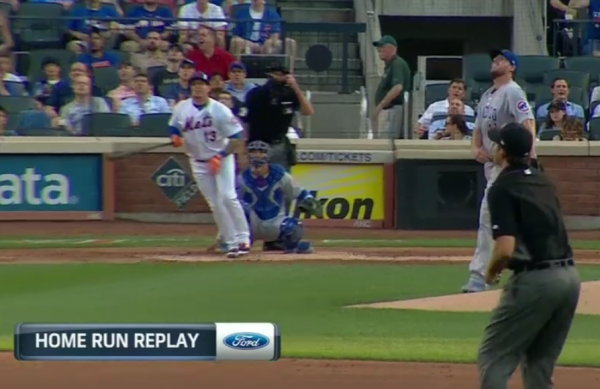Manager WAR
by Bruce • June 13, 2017 • LifeStuff • 0 Comments
There was a brief kerfuffle in the Cubs media room last night before Chicago starter John Lackey stepped into- and earned- his 7th loss of the year in New York.
Lackey, the crazy-eyed charger in Chicago’s stable of previously stalwart starters, is off this year, and in 13 starts, the elder pitcher is 4-7 with a 5.25 ERA.
What has been added to the painfulness of his work, though, has been his freedom to give up the long ball to opponents this year. In those 13 games started, Lackey has given up 19 home runs- including 3 to the Mets in last night’s game.
And so, before last night’s game, Maddon shared a thought, and Lackey reacted to it:
Before the [game], Maddon indicated Lackey might try some new things. Lackey said he didn’t know what Maddon was talking about, which summed up another frustrating night.
“Joe doesn’t have much to do with the pitching,” Lackey quipped. “I don’t know what he’s talking about there.” – ESPN
The Cubs are having pitching struggles this year, certainly, coming off of their magical World Series Championship season last year. But they are also having hitting troubles, and defensive troubles as well. At 31-32, the Cubs have tagged .500 twelve times through the first third of the season, and seem saddled to a mediocre campaign, unless something changes for them soon.
And understandably so, Lackey, being the firestorm he can be when perturbed, is frustrated.
Lackey’s push-back on Maddon’s suggestion was probably a momentary blurt by a man who seethes at any error he commits hurling, hitting, or eating, or talking, or walking. Lackey is combustible and after the inital explosion, the flames die fairly quickly. And Maddon- he’s a manager, and he’s seen and coached Lackey’s like on other teams during his 42 years as a manager and coach.
But it still got me thinking.
If a player like Lackey did become dismissive of a manager like Maddon, what would that mean?
Lackey was certainly key in the machinery that helped give Chicago that first elusive World Series crown in 108 years. He pitched well during the season, and was exceptional during the team’s playoff run. But he was also on a team with a bunch of players. And Maddon was the guy coordinating and coaching the success.
—
The math stat guys in recent years came up with a relative measure of a player’s significance to their team over a given playing year, or in total, across their career. This stat, Wins Above Replacement (WAR), simply suggests how valuable that player was in giving their team wins, measured against if a replacement, a player of nominal ability, was playing their position instead.
WAR involves math, but it puts the value of players in a spectrum. A player with 0 WAR is essentially a player of replacement quality put out on the field. The average MLB player has a WAR of about 2, and a position player of WAR 2 produces about 17.5 runs more than the replacement player. And then you have your super performers. If a starter “should” have a WAR of 2+, your All-Stars are usually in the 5 WAR range, and your MVP’s, 8+.
Kris Bryant, in his MVP season last year, had a WAR of 8.4. By comparison, Babe Ruth has had 7 of the 10 best WAR seasons ever, with his 14.1 season in 1923 to top them all.
WAR is an approximate stat. It’s inexact and guesstimated to some extent, but it gives a pretty good indication of the quality of a player’s year. And for pitchers, the WAR is calculated differently than for position players who are expected to play defense and score runs. Pitchers are suppose to keep the opponent’s off the field.
So I’ve talked a lot about WAR.
—
Last year, the Year of the Champion Cubs, John Lackey had a WAR of 3.1.
3.1 is decent.
His WAR was also 9th on the team.
And 4th among his peer starters on the Cubs, behind Hendricks, Lester, and then Arrieta.
We can, to an extent, quantify Lackey’s contributions as a player on last year’s team, as well as on this year’s version.
What we lack here is an equivalent measure for managers.
The players take the field and make the plays, giving strikeouts, garnering hits, and getting outs. Along the way, they also grab headlines and good paychecks. But what about the wizard behind the curtain, making the lineup card, plugging players into positions, pulling and replacing pitchers before they blow up, and setting the tone for team play? What is that guy worth?
What would Maddon’s Manager WAR be to the 2016 Cubs that finally got through to the Promised Land?
I want to know how to calculate the stat for that.
Because I bet it was a little higher than 3.1 last year.
And I bet Maddon knows a little something about pitching.

